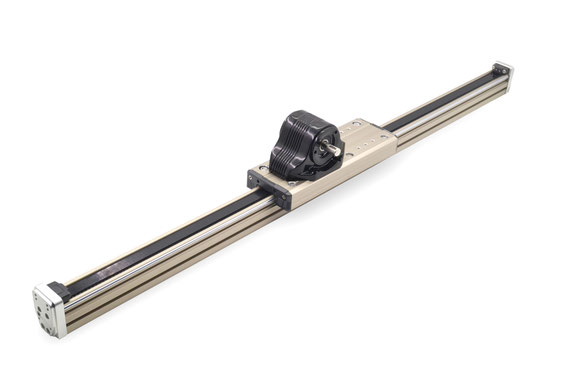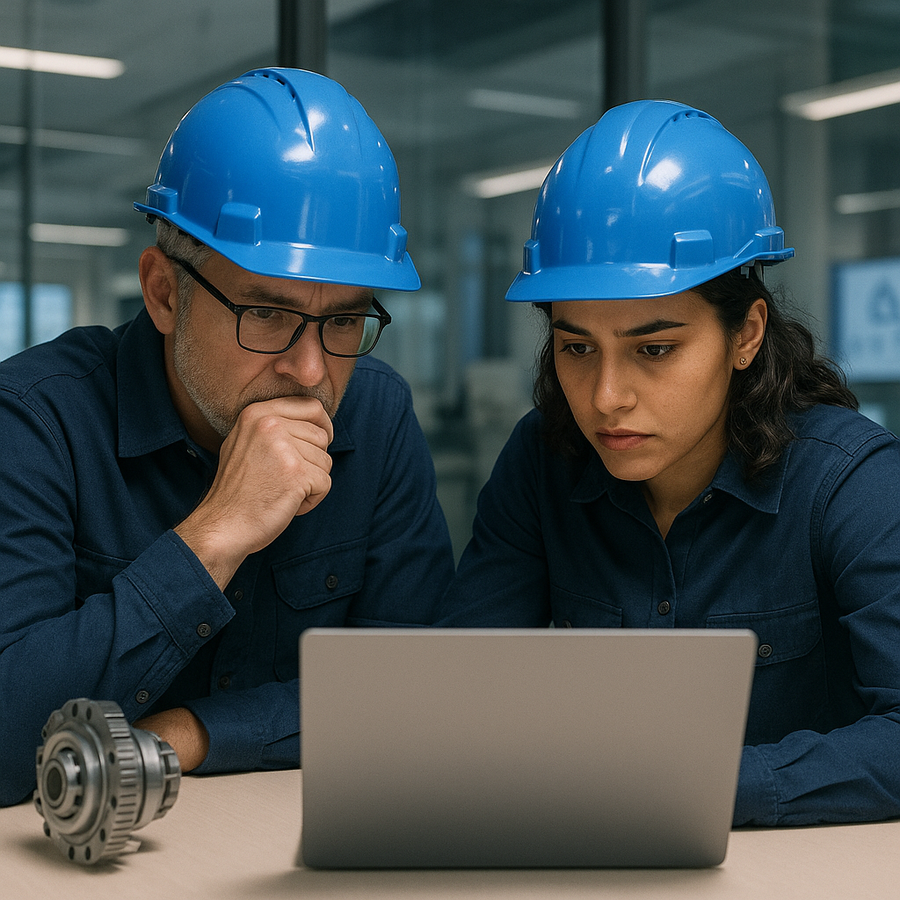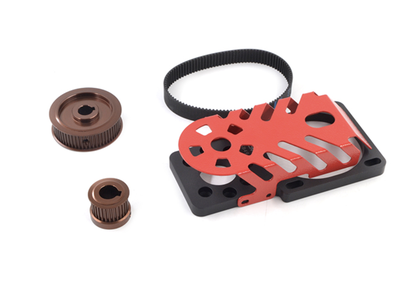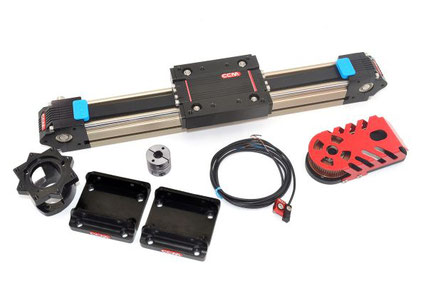CCM Z80-50 Linear guide rail belt driven for palletizer motion

Looking for the Right Linear Guide Rail for Your Application?
We understand how overwhelming it can be to choose the right linear guide rail when so many options online look similar and claim high performance. That’s why we’ve made it simple for you.
You have two clear options:
1. Stay here and check the technical specifications of our precision-engineered linear guide rail modules.
or check
2. How to Choose the Right Belt-Driven Linear Rail—Without Wasting Time or Money. Avoid common pitfalls, decode tech specs, and find the rail that fits your application perfectly.
Technical parameters of Z80-50
-
Guide Width: 80 mm
-
Max Load: 50 kg
-
Pitch: 190 mm
-
Synchronous Wheel Spec: STD5M-38Z
-
Recommended Speed: ≤ 2 m/s
-
Customized Length: Up to 6 meters
-
Input Torque: ≤ 13.5 N·m
-
Belt Spec: PU-5M-33 (steel wire)
-
Straightness: 0.05 / 300 mm
-
Applicable Motors:
-
Stepper Motor: 86 / 110 (Direct Connection)
-
Servo Motor: 400W/750W/1000W/1500W (Direct Connection)
-
-
Suggested Length Adjustment: Effective stroke + 520 mm (length adjustment in increments of 50 mm, such as 1000 mm, 1050 mm, 1100 mm)
This summarizes the key technical specifications for the Z80-50 linear motion system. If you require the full data sheet of the technical parameters, please contact us.
⚠️ Common Mistakes When Building a Palletizer Machine

Avoid these costly errors to ensure speed, safety, and stack quality.
1. ❌ Underestimating Load Stability Needs
Poorly stacked products = collapsed pallets.
🔧 Always analyze product size, shape, and weight distribution. Use proper layer patterns (e.g., interlock or brick) and consider slip sheets or corner boards if needed.
2. ❌ Choosing the Wrong End Effector or Gripper
Not all products can be picked the same way.
🔧 Match your gripper to the product type: suction for boxes, clamps for heavy or irregular items, fork tines for bags. One-size-fits-all rarely works.
3. ❌ Ignoring Conveyor Alignment and Product Spacing
Bad infeed = jammed system or misaligned stacks.
🔧 Ensure your product is aligned and spaced correctly before it reaches the palletizer. Use sensors, guides, and buffer zones to keep the flow consistent.
4. ❌ Skipping Safety Systems
Palletizers are powerful—and potentially dangerous.
🔧 Install emergency stops, light curtains, safety fences, and warning systems. Don’t rely on software alone to keep operators safe.
5. ❌ Overcomplicating the System
Too much automation too soon can backfire.
🔧 Start with a simple layout and reliable controls. Only add complexity (like vision systems, pattern changers, or pallet dispensers) when necessary and tested.
6. ❌ Not Accounting for Floor Space and Clearance
Your layout might fit on paper—but not in real life.
🔧 Consider loading/unloading zones, forklift access, and pallet exchange space. Also leave room for maintenance.
7. ❌ Failing to Plan for Speed and Throughput
A system that’s too slow creates bottlenecks.
🔧 Match your cycle time to your production line. Use servo motors, synchronized conveyors, and multi-product gripping when higher throughput is required.
8. ❌ Ignoring Product Variability
Today's product may not be tomorrow’s.
🔧 Design for flexibility—adjustable guides, programmable patterns, or interchangeable grippers will save you headaches in the future.
9. ❌ Lack of Proper Integration with Upstream/Downstream Systems
If your palletizer can’t keep up with your line—or overfeeds it—it creates chaos.
🔧 Coordinate with conveyors, wrappers, labelers, and MES/PLC systems from the beginning.
10. ❌ No Maintenance or Support Plan
Breakdowns are expensive—and often preventable.
🔧 Set up regular inspections, greasing schedules, spare part kits, and sensor calibration routines. Include training for operators.
✅ Final Advice:
A palletizer should stack with precision, run reliably, and keep people safe. Focus on proper motion control, safety, product handling, and future-proofing.
If you're designing or upgrading a palletizer, we can help with the belt-driven Cartesian motion system, smart grippers, or full integration advice.
Other Models
Accesories for linear guide rails


